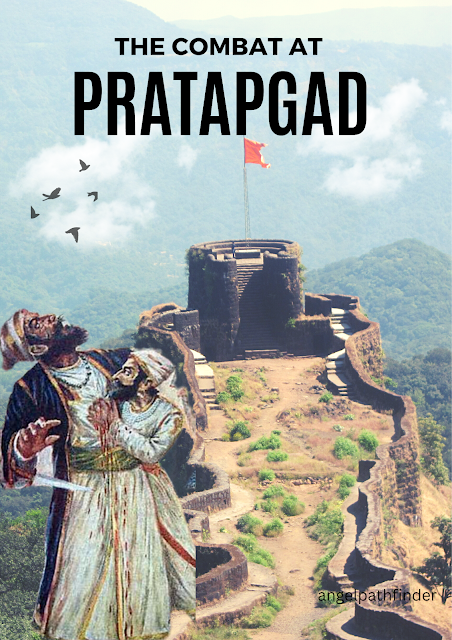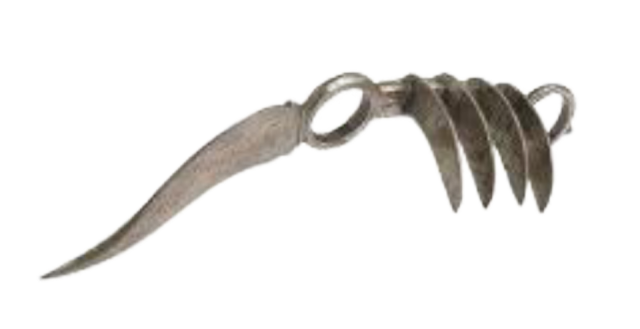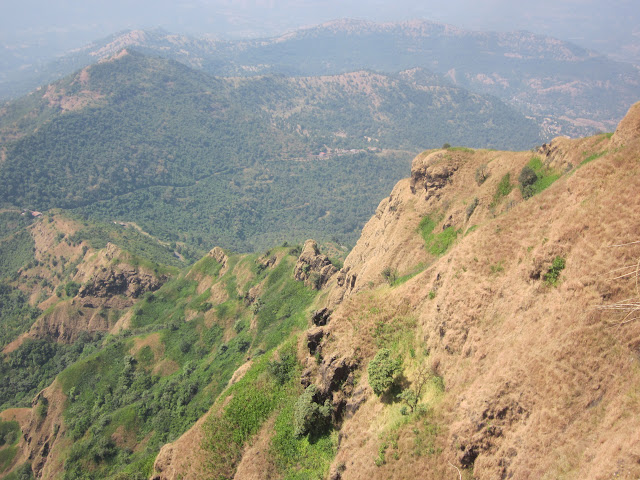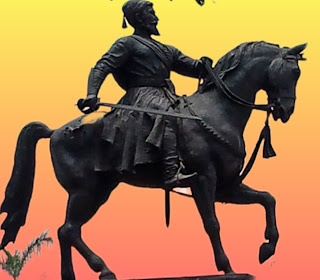💡Marathas are a militant-peasant community who hail from the state of Maharashtra (Marathi-speaking people). They had centuries old association with Bijapur, Ahmednagar and Golconda (muslim) Sultanates where they served as soldiers and military leaders.
💡Chatrapati Shivaji Maharaj Bhonsle (b. 1630, d. 1680 CE) was the second son of Shahji raje Bhonsale and his first wife Jijabai. He was born at Shivneri fort in Junnar and named Shivaji after Shivai Devi the deity of the fort.
Previous blog post- Panchgani, Mahabaleshwar leisure break
Shahji raje Bhonsale was a military leader. Towards the end of his career he served the Adil Shahis of Bijapur. But due to hostilities with the Bijapur-Mughal faction, he was personally prohibited from living at his Pune jagir since it was part of the Bijapur-Mughal alliance areas. Later he was deployed on a military campaign to South India. To read more about Shivaji's ancestry and Maratha history, click on the link.
1646- Shivaji begins his military career
The fort of Torna was captured in 1646 when Shivaji was only 16 years old. He thereafter seized many other important forts around Pune~ Purandar, Chakan and Kondana. He also captured areas such as Baramati, Indapur and Supe. With the treasure from Torna Shivaji built the fort of Rajgad and made it his headquarters. He later turned his attention towards the Konkan and captured the strategic town of Kalyan. In 1647 Moropant Trimbak Pingle joins Shivaji. He is assigned the task of building Pratapgad.
💡Moropant Trimbak Pingle is the 1st Peshwa (Prime Minister) of the Maratha empire.
💡The Pratapgad fort was meant to have good control over the ghat section. With the river Koyna flowing at the foothills, the fort would help defend the banks of river Koyna, Nira plus also defend the Par pass.
1648- Shahji raje is held hostage for his son's actions
The Bijapur Sultanate had by now taken note of the growing risk and labelled Shivaji- a rebel. Shahji and another Maratha sardar named Baji Ghorpade were held hostage/ imprisoned on 25 July 1648. Under the circumstances, Shivaji refrained from any fresh campaigns and instead chose to consolidate his earlier victories. Shahji was later released in 1649 only after he secured Bijapur Sultanate's position further in Karnataka.
Shivaji v/z Shahji raje
Shivaji's actions clearly conflicted with those of his father. While Shahji was an invaluable asset and acted in favour of the Bijapur Sultanate, Shivaji on the other hand fought against muslim rulers. Moreover, unlike Shahji's shifting loyalties from one Deccan Sultanate to another, Shivaji was undeterred in his intent on building Swarajya - a state of Hindu pride.
💡Shahji raje died in 1664-65 during a hunting expedition.
1656- Shivaji resumes his military campaigns
Chandrarao More, a Maratha sardar and loyal vassal of Bijapur state was in charge of the dense forested valley of Jaoli, Mahabaleshwar. This land was a jagir (grant) given to him by the Bijapur Sultanate. Shivaji killed Chandrarao More and seized Jaoli from him.
💡Jaoli is the thick forested area surrounding Pratapgarh fort. It is a strategic location connecting the Sahyadri range to Konkan.
1657 CE- Ali Adil Shah II (r. 1656 to 1676) had recently ascended the Adil Shahi throne after his father Mohammad Adil Shah. This act by Shivaji prompted him to dispatch a huge force under General Afzal Khan against the Maratha.
 |
| A deadly combat between Shivaji and Afzal Khan at Pratapgad (fort), Maharashtra |
Afzal Khan's cavalry set out in hot pursuit of Shivaji who by now retreated into his newly built fort. Enroute the Bijapur army desecrated some important temples at Pandharpur before reaching Pratapgad ('gad' means 'fort').
The treacherous Ambenali ghat from Mahabaleshwar leading to Pratapgad fort. Landslides are common on the route (video)
💡Daily ST buses, Mahabaleshwar to Pratapgad fort 24 kms (via Ambenali ghat) at 9am and 11am.
1659- Battle of Pratapgarh : a decisive victory
Afzal Khan's hopes of capturing Shivaji and his fort ended in a disappointing 2 month siege stalemate. Apparently he lacked the equipment that was needed to break into the fort, while Shivaji on the other hand was unwilling to surrender/ end the siege. The well-built but crafty Bijapur general suggested a truce negotiation with Shivaji at a spot outside the fort. The day was 10 Nov 1659- The arrangements were made and small tent 🎪 was prepared for the meeting. Only 1 sword and a follower was allowed per leader. However, Shivaji smelling a rat came prepared wearing armor underneath his clothes and carrying a well-concealed "wagh nakh" (tiger claw sharp weapon) with him.
 |
| bagh nakh used by Shivaji to kill Afzal Khan |
The 6.7' tall Bijapur general embraced the short stature Shivaji while at the same time piercing him with a sword in the back. Shivaji was protected by his armor and equally spared no time in debowelling Afzal Khan using his 'bagh nakh' killing him at that very moment. Thereafter, he fired a cannon to signal his hidden troops for an all out attack on the Bijapur army. A fierce Battle of Pratapgarh was fought below the ramparts of the fort. The battle resulted in Shivaji's men killing 3000 soldiers of the Bijapur army plus two of Afzal Khan's sons and two Maratha sardars (allies of Bijapur) were taken captive. The Marathas also lost 1724 soldiers with 420 wounded. But Adilshahis losses were incomparable- a vast number of camels, horses, jewels and money, besides the grain they had stored up at Wai were all lost to the Marathas.
The Battle of Pratapgarh not only ended in a victory for the Marathas but elevated the Maratha empire to a considerable stature.
💡 Among the noteworthy Marathas who fought The Battle of Pratapgad was Tanaji Malusare who would later give his life for the recapture of Kondana or Sinhagad fort.
Afzal Khan was accorded due a befitting burial as per Islamic traditions. His tomb is located in Pratapgarh at the spot where he was killed.
 |
| The Sahyadri mountainous terrain surrounding Pratapgarh |
💡Tour guides are available in Hindi and Marathi to give tourists an interesting recount of the fort.
 |
| Entrance of Pratapgad fort |
If you enjoyed reading this blog, please put in a comment and share it with others 🙏





Comments
Post a Comment